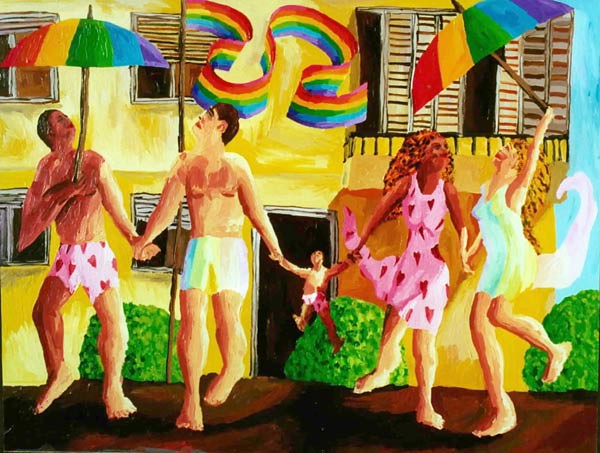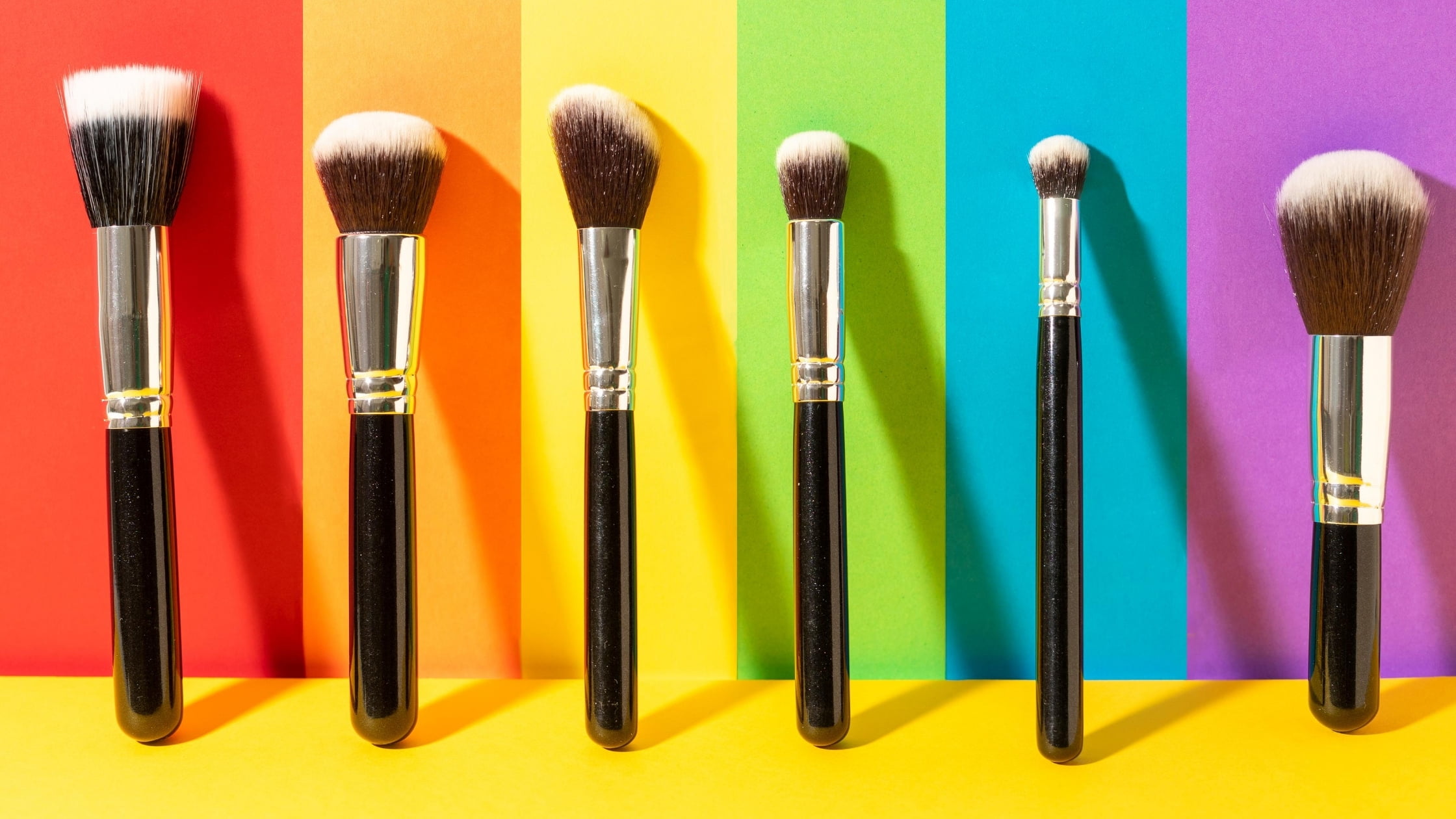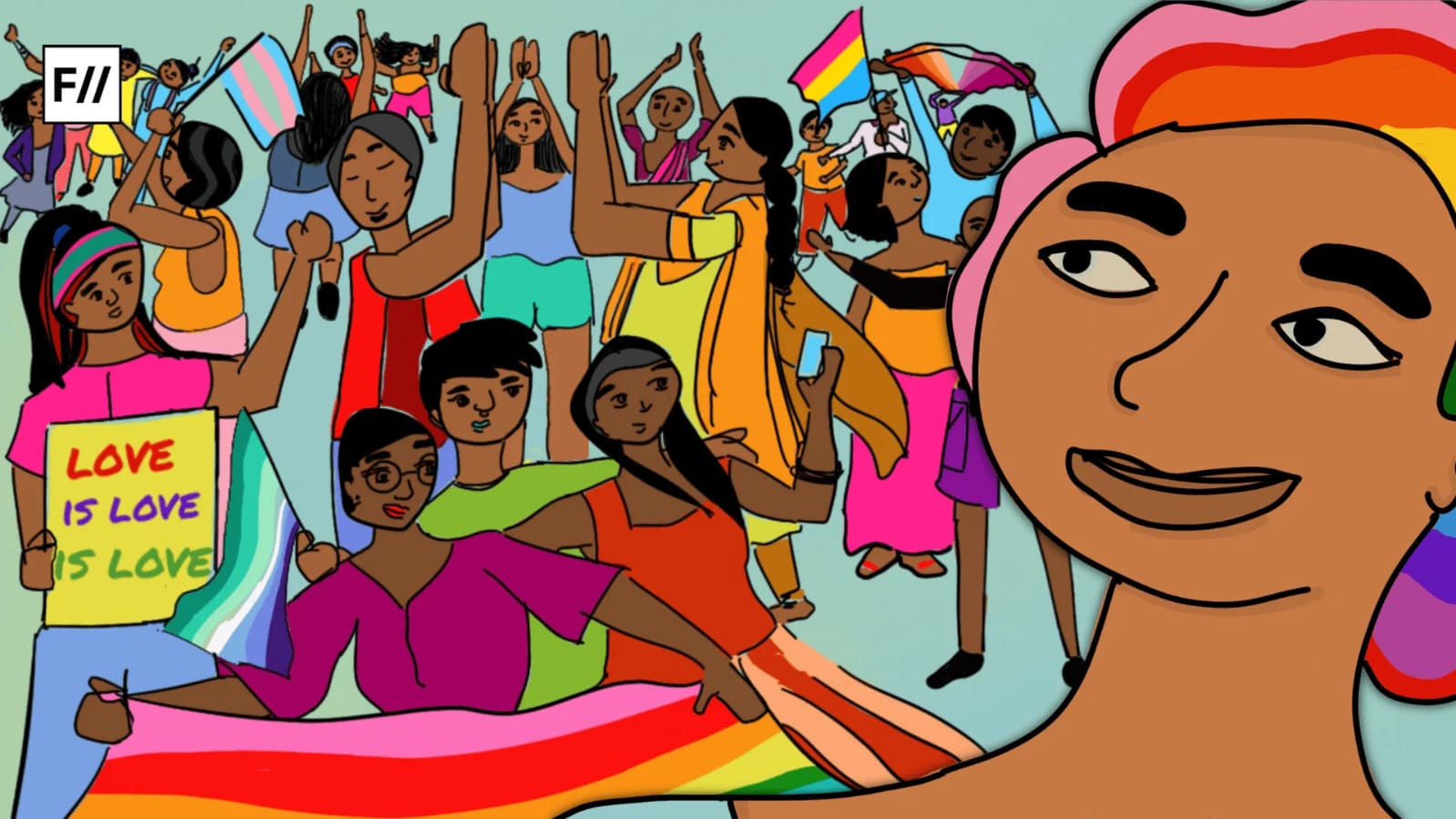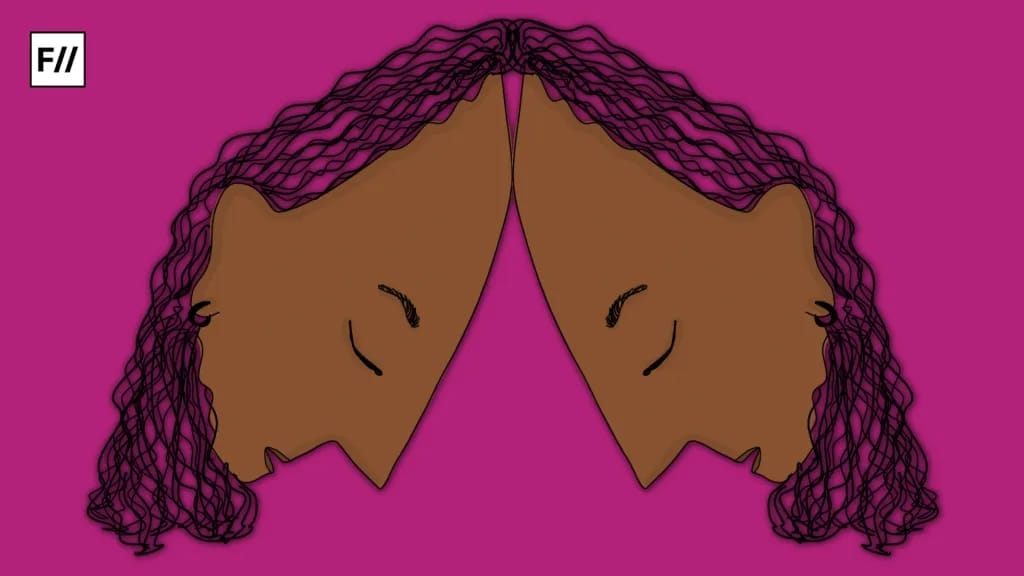Editor’s Note: FII’s #MoodOfTheMonth for June 2022 is Pride Solidarity. We invite submissions on the many layers of this theme throughout the month. If you’d like to contribute, kindly refer to our submission guidelines and email your articles to sukanya@feminisminindia.com
For a long time, makeup and hairstyling have been gendered as ‘feminine‘ by the dominant patriarchal culture, despite research and studies showing that this wasn’t always the case. Men used makeup products from Kohl to nail polish across different periods and regions. Today, with more recognition of fluidity in gender identity and gender expression, beauty and makeup are also going through a renaissance. Many queer people are drawn towards it as a form of self-expression and resistance against heteronormative standards, which closeted them in a box for so long.
When Suman Gurung was little, he was enthralled watching his mother put on makeup elaborately. So much so that once he even asked her to sit quietly and let him do her makeup. She agreed. Now he posts alluring pictures of himself in different makeup looks on his social media page. “Initially, my parents were in shock. Still, they are not supportive of me posting my pictures on social media,” says Suman. But Suman carries on with the hope that his parents will come around in the future.
At 18 years, Suman is still exploring his skills and sexuality. He sees himself as a part of the LGBTQIA+ community but hasn’t figured out which category he belongs to. Suman passionately believes that makeup has no gender. When someone criticises him for using makeup being a man he says, “There are no labels which say it is only for women right?” Makeup is both therapy and self-expression for him.

This self-expression of queer and gender non-conforming people is helping to add new perspectives and dimensions to the binary idea of beauty and art. Roselyn Magar, 20, a trans woman from Butwal, Nepal, who has been working as a professional make-up artist says, “I use makeup to build a different person from who I am. It gives me confidence and motivates me to be a better version of myself. I think this is how my approach to makeup is different from that of cisgender people.”
Roselyn, who is also a drag queen, uses makeup to transform into another character and calls herself an illusionist makeup artist. Her identity and aspirations play a crucial role in the images she draws and the looks she creates.
But degendering beauty cannot merely be limited to the works of these freelance makeup artists who still face backlash and discrimination from homophobic sections of the society. Roselyn recounts the experience of being dropped from a project when people who initially thought she was a woman later came to know that she was a transwoman. Aryan believes that people still do prefer female makeup artists over artists from the LGBTQIA+ community because of gender stereotypes and homophobia
When asked why makeup and not any other form of art, Roselyn says, “I also love sketching and painting but makeup has given me more power.” In a similar vein, Aryan Gurung, an 18-year-old make-up artist and body-painter who identifies as a demi-sexual man considers it to be a form of art because essentially one is creating art with make-up, just on people and not on paper. “I feel like body-painting and makeup help me express myself better than how I, as an artist, can express through drawings on paper,” Aryan says.
Body modifications are considered a staple to the queer culture as a tool of both power and reclamation. Such expressions are important for queer people not only to declare their identities but also to make their bodies a place they want to live in and admire. Queer performance artists who use their bodies as a medium for art take it for their malleability and power of transformation.
Gender queer artist and transgender individual Kris Grey believes, “The body is a material that one can mould and one can shape and one can change and the body is constantly changing, in that we are always becoming ourselves. So I use my body just like I use any other sculptural material.” When asked what makes his body-painting different, Aryan who uses his body as canvas says he doesn’t know any cis-gender person doing body painting.
Also read: How These Artists Are Addressing Body Image Issues In The Lockdown

As people with different identities and expressions bring more innovations in the beauty and makeup field, there is bound to be changes in the definition and patterns of long held traditional gender images. Like Drag and make-up artist Laurel Charleston mentions, “I quickly realised that it was very hard to do stereotypical ‘feminine’ drag make-up on my huge hooded brow bones, so I decided to resort to something totally different and outside of the world of gender: big, bold shapes.”
Instead of mere rainbow washing during Pride Month, there need to be more conscious efforts like hiring more transgender and gender-nonconforming people at all levels and compensating them fairly. It is also important to interrogate gender markers or segregators from magazines, products, editorials, and conversations, recognising and upholding that these products never had genders, to begin with
Gender non-conforming artist and writer, Alok Vaid-Menon believes that gender non-conforming individuals have always been the most fashionable, most interesting, and most creative people. Over the decades, their expressions have led to overriding the gendered notions around beauty aesthetics. As Menon says, beauty is not about social conformity, but expressing who you are and looking like yourself. Consequently, queer people with different identities and experiences bring more character and authenticity to the existing binary world of beauty and makeup art.
But degendering beauty cannot merely be limited to the works of these freelance makeup artists who still face backlash and discrimination from homophobic sections of the society. Roselyn recounts the experience of being dropped from a project when people who initially thought she was a woman later came to know that she was a transwoman. Aryan believes that people still do prefer female makeup artists over artists from the LGBTQIA+ community because of gender stereotypes and homophobia.

Instead of mere rainbow washing during Pride Month, there need to be more conscious efforts like hiring more transgender and gender-nonconforming people at all levels and compensating them fairly. It is also important to interrogate gender markers or segregators from magazines, products, editorials, and conversations, recognising and upholding that these products never had genders, to begin with.
People in the beauty and makeup industry must draw from the forgotten history of non-binary makeup art and use the form to foster inclusive aesthetics in shoots and campaigns, as well as amplify the expressions and talents of artists from the queer community.
Also read: Sony Thockchom: The Manipuri Artist Dismantling Stereotypes About North-Eastern Art
Featured Image Source: Natalie Setareh
About the author(s)
Shuvangi is an independent writer and researcher based in Kathmandu, Nepal





Hey, great post! I really like the content you have shared. Keep sharing!